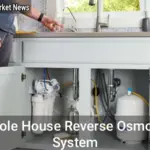Growing your own tomatoes from seeds indoors offers gardeners a rewarding opportunity to cultivate vibrant, flavorful plants while gaining full control over the growing process. By starting tomatoes from seeds, you can select unique varieties, ensure organic practices, and enjoy the satisfaction of nurturing plants from their earliest stages. This comprehensive guide explores the essential steps, techniques, and tips for successfully initiating tomato seed germination indoors, empowering you to achieve a thriving tomato garden.
Understanding the Benefits of Indoor Seed Starting
Initiating tomato seed germination indoors provides several advantages, particularly for gardeners in regions with short growing seasons. By starting seeds indoors, you extend the growing period, allowing plants to develop strong roots and stems before transplanting them outdoors. This approach also protects young seedlings from unpredictable weather, pests, and diseases, ensuring healthier plants. Additionally, indoor seed starting enables you to experiment with heirloom or specialty tomato varieties that may not be available as seedlings at local nurseries. With careful planning, you can create optimal conditions for germination and early growth, setting the stage for a bountiful harvest.
Choosing the Right Tomato Varieties
Selecting the appropriate tomato variety is a critical step when you start tomatoes from seeds. Consider factors such as your climate, available garden space, and culinary preferences. Determinate varieties, like Roma or Bush Early Girl, are ideal for compact spaces and produce fruit in a concentrated period. Indeterminate varieties, such as Brandywine or Cherokee Purple, continue growing and fruiting throughout the season, making them suitable for larger gardens. Researching seed catalogs or consulting with local gardening experts can help you identify varieties that thrive in your region. Pay attention to days-to-maturity ratings to ensure your plants have sufficient time to produce fruit before the growing season ends.
Gathering Essential Supplies for Indoor Seed Starting
To successfully start tomatoes from seeds indoors, you’ll need to gather a few key supplies to create an environment conducive to tomato seed germination. These include high-quality seeds, seed-starting trays or pots, a sterile seed-starting mix, grow lights or a sunny windowsill, and a watering can or spray bottle for gentle hydration. Opt for a seed-starting mix that is lightweight and well-draining to promote healthy root development. If you’re using grow lights, choose full-spectrum LED lights to mimic natural sunlight. Additionally, consider investing in a heat mat to maintain consistent soil temperatures, as tomatoes require warmth for optimal germination.
Preparing for Successful Tomato Seed Germination
Proper preparation is essential to ensure successful tomato seed germination when starting seeds indoors. Begin by filling your seed-starting trays or pots with a moistened seed-starting mix, leaving about a quarter-inch of space at the top. Sow seeds at a depth of approximately one-quarter to one-half inch, spacing them about an inch apart to allow room for growth. Cover the seeds lightly with the mix and gently press down to ensure good seed-to-soil contact. To maintain humidity, cover the trays with a clear plastic lid or wrap until germination occurs, which typically takes 5 to 10 days under ideal conditions.
Providing Optimal Growing Conditions
Creating the right environment is crucial when you start tomatoes from seeds indoors. Tomatoes thrive in warm, well-lit conditions, with soil temperatures between 70°F and 80°F for optimal germination. If you’re using a heat mat, set it to maintain this temperature range. Place your trays in a location that receives at least 12 to 16 hours of bright light daily, either from a south-facing window or grow lights positioned 2 to 4 inches above the seedlings. Keep the soil consistently moist but not waterlogged, using a spray bottle to avoid disturbing the delicate seeds. Once seedlings emerge, remove the plastic cover to prevent mold and promote air circulation.
Caring for Tomato Seedlings
After germination, proper care ensures your seedlings develop into strong, healthy plants. Thin seedlings to one per cell or pot by snipping weaker ones at the soil level, allowing the strongest to thrive. Continue providing ample light to prevent leggy growth, adjusting grow lights as the plants grow taller. Water seedlings regularly, ensuring the soil remains moist but not soggy. About two weeks after germination, begin fertilizing with a diluted, balanced liquid fertilizer (such as 10-10-10) every 10 to 14 days to support vigorous growth. Monitor for signs of pests or diseases, such as damping-off, and address issues promptly to protect your plants.
Transplanting Seedlings Outdoors
Once your tomato seedlings develop their first true leaves and reach 6 to 8 inches in height, they’re ready for hardening off and eventual transplanting. Hardening off involves gradually exposing seedlings to outdoor conditions over 7 to 10 days to reduce transplant shock. Start by placing them in a shaded, protected area for a few hours each day, gradually increasing their exposure to sunlight and outdoor temperatures. Transplant seedlings into the garden after the last frost date in your area, choosing a sunny location with well-draining, fertile soil. Space plants 18 to 36 inches apart, depending on the variety, and water thoroughly after planting.
Common Supplies for Indoor Seed Starting
To clarify the essentials needed for indoor seed starting, the following table outlines key supplies, their purposes, and approximate costs:
| Item | Purpose | Approximate Cost |
|---|---|---|
| Seed-Starting Trays | Holds soil and seeds, allows for easy transplanting | $5–$15 |
| Seed-Starting Mix | Provides a sterile, well-draining medium for germination | $8–$20 |
| Grow Lights (LED) | Supplies consistent light for seedling growth | $20–$100 |
| Heat Mat | Maintains optimal soil temperature for tomato seed germination | $15–$50 |
| Watering Can/Spray Bottle | Ensures gentle, even watering to avoid disturbing seeds | $5–$15 |
| Tomato Seeds | The foundation of your tomato plants, available in various varieties | $2–$5 per packet |
This table serves as a quick reference for gardeners planning to start tomatoes from seeds indoors, ensuring they have the necessary tools to succeed.
FAQ: Common Questions About Starting Tomatoes from Seeds Indoors
What is the best time to start tomatoes from seeds indoors?
The ideal time to start tomatoes from seeds indoors is 6 to 8 weeks before the last expected frost date in your region. This allows seedlings to develop into sturdy plants ready for transplanting once outdoor conditions are favorable.
How long does it take for tomato seeds to germinate?
Under optimal conditions, tomato seed germination typically takes 5 to 10 days. Factors such as soil temperature, moisture, and seed quality can influence germination speed.
Do I need grow lights to start tomatoes from seeds indoors?
While a sunny windowsill can work, grow lights are highly recommended for indoor seed starting. They provide consistent, full-spectrum light, preventing leggy seedlings and promoting strong growth.
How often should I water tomato seedlings?
Water tomato seedlings when the top layer of soil feels dry to the touch, ensuring the soil remains consistently moist but not waterlogged. Using a spray bottle helps prevent overwatering and protects delicate seedlings.
Can I reuse seed-starting trays for multiple seasons?
Yes, seed-starting trays can be reused if properly cleaned and sterilized between uses to prevent the spread of diseases. Wash them with soap and water, then soak in a 10% bleach solution for a few minutes before rinsing thoroughly.
What should I do if my seedlings become leggy?
Leggy seedlings result from insufficient light. To correct this, move your seedlings closer to a light source or adjust grow lights to 2 to 4 inches above the plants. Increasing light exposure will encourage compact, sturdy growth.
How do I know when my seedlings are ready to transplant?
Seedlings are ready to transplant when they have at least two sets of true leaves and are 6 to 8 inches tall. Ensure outdoor temperatures are consistently above 50°F and harden off the plants before moving them to the garden.
Conclusion
Starting tomatoes from seeds indoors is a fulfilling and practical approach to growing your own food, offering gardeners the chance to cultivate unique varieties and enjoy an extended growing season. By carefully selecting seeds, providing optimal conditions for tomato seed germination, and nurturing seedlings with proper care, you can set the foundation for a thriving tomato garden. With the right supplies, attention to detail, and a bit of patience, indoor seed starting empowers you to produce healthy, productive plants that yield delicious tomatoes for your table.

